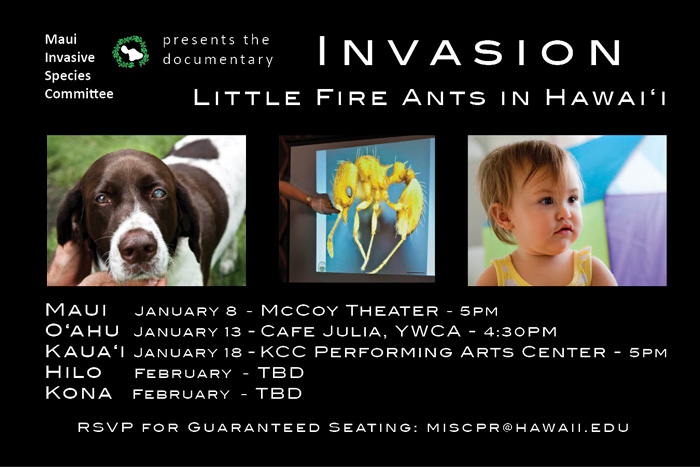Ginger Johnson bought a hapu‘u fern late in 2013 to plant alongside others in her yard. But when she heard…
Read More
little fire ant
The little fire ant-bad news for food crops
The little fire ant, Wasmannia auropunctata, is a pest with a deservedly nasty reputation. Alone, this wee ant is neither…
Read More
Flower grower who detected little fire ant in December 2013 receives award
Farmer and flower grower Masako Cordray was the 2014 recipient of the Malama i ka Aina Award, presented Saturday…
Read More
Moving? Leave the pests behind
Ask anyone who has moved lately – it’s a daunting task. Every move, whether across town, across the state, or…
Read More
Premiere of the new documentary Invasion: Little Fire Ants in Hawaii
In 2009, Waihee farmer Christina Chang was stung on the eye by a tiny ant at her home on Maui….
Read More





